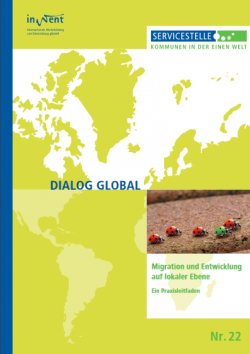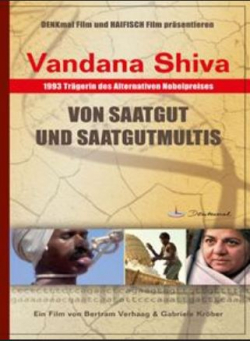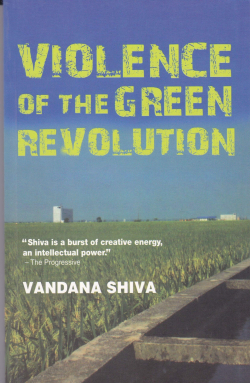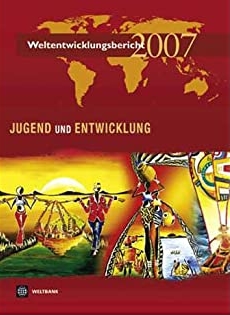Pulse of Life: The Rich Biodiversity of Edible Legume
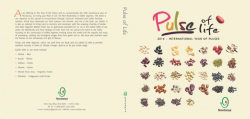
Buchhandlungen
Art
Book
Autoren
Kategorie
SDG 15: Leben an Land
[ Browse Items ]
Tags
Zusammenfassung
The book is our response to the spread of monocultures through chemical, industrial and unfair farming systems which have destroyed our food systems, our farmers, and not in the least, our health. It also reconnects us with the amazing diversity of pulses and other legumes Mother Earth has so generously provided. As in the earlier titles of this series The Biodiversity and Food Heritage of India, here too, we connect the seed to the table, focusing on the cornucopia of edible legumes existing across the world and the equally rich ways of processing, cooking and ecological usages they have given rise to. The book also touches upon the threats to this immensely rich gift of nature.
Beschreibung
Pulses are truly the pulse of life: for the soil, for people and the planet. In our farms they give life to the soil by providing nitrogen. This is how ancient cultures enriched their soils. Farming did not begin with the Green Revolution and synthetic nitrogen fertilisers. Whether it is the diversity-based systems of India, or the three sisters planted by the first nations in North America, or the ancient Milpa system of Mexico, beans and pulses were vital to indigenous agro-ecological systems. […]
[…] The monocultures promoted by the Green Revolution had a direct impact on the decline of pulse production by displacing biodiversity, and with it depleting soil fertility. Mixed cropping was impossible with the intensive use of chemicals of the Green Revolution. With the change from mixed cropping to monocultures, less pulses were planted, production reduced and with the absence of legumes, nitrogen levels in the soil got depleted. […]
[…] Pulses fix 150-200kg of nitrogen per hectare. When pulses are removed from farming systems, synthetic nitrogen fertilisers are used. Returning organic matter to the soil also builds up soil nitrogen. A recent study we undertook has shown that organic farming increased nitrogen content of soil between 44 and 144 per cent (depending on the crops grown). […]
[…] Green Revolution displaced pulses from the fields, and replaced them with Bt cotton and soya monocultures. 11.6 million hectares of Bt cotton were planted in India in 2014. If pulses had been planted on half this land, we would have had an additional 4 million tonnes of pulses available. In 2014, 12.12 million hectares of land were planted with soya instead of growing the 10 million tonnes of pulses we needed. Why are we growing soya for export and importing the pulses we eat?
With the artificially created pulse scarcity, pulses have become unaffordable for many Indians. This artificially created scarcity is being used by the government to import pulses from corporations like Cargill India Pvt Ltd. Today, we are the biggest importers of pulses. And since the rest of the world does not grow the diversity of pulses we grow, what is being imported cannot replace the diversity necessary for the Indian diet.
[…] The monocultures promoted by the Green Revolution had a direct impact on the decline of pulse production by displacing biodiversity, and with it depleting soil fertility. Mixed cropping was impossible with the intensive use of chemicals of the Green Revolution. With the change from mixed cropping to monocultures, less pulses were planted, production reduced and with the absence of legumes, nitrogen levels in the soil got depleted. […]
[…] Pulses fix 150-200kg of nitrogen per hectare. When pulses are removed from farming systems, synthetic nitrogen fertilisers are used. Returning organic matter to the soil also builds up soil nitrogen. A recent study we undertook has shown that organic farming increased nitrogen content of soil between 44 and 144 per cent (depending on the crops grown). […]
[…] Green Revolution displaced pulses from the fields, and replaced them with Bt cotton and soya monocultures. 11.6 million hectares of Bt cotton were planted in India in 2014. If pulses had been planted on half this land, we would have had an additional 4 million tonnes of pulses available. In 2014, 12.12 million hectares of land were planted with soya instead of growing the 10 million tonnes of pulses we needed. Why are we growing soya for export and importing the pulses we eat?
With the artificially created pulse scarcity, pulses have become unaffordable for many Indians. This artificially created scarcity is being used by the government to import pulses from corporations like Cargill India Pvt Ltd. Today, we are the biggest importers of pulses. And since the rest of the world does not grow the diversity of pulses we grow, what is being imported cannot replace the diversity necessary for the Indian diet.
Anzahl der weiteren Exemplare
1
| Bibliothek | Akzessionsnummer | Signatur | Exemplar Nr. | Ausgabe | Standort | Verfügbarkeit |
|---|---|---|---|---|---|---|
| Main | 305 | 1 | Yes |
Buchhandlungen
REZENSIONEN (0) -
No reviews posted yet.
SCHREIBEN SIE EINE REZENSION
Bitte loggen Sie sich ein um eine Rezension zu schreiben.
